#the other is raspberry pyrausta
Explore tagged Tumblr posts
Text


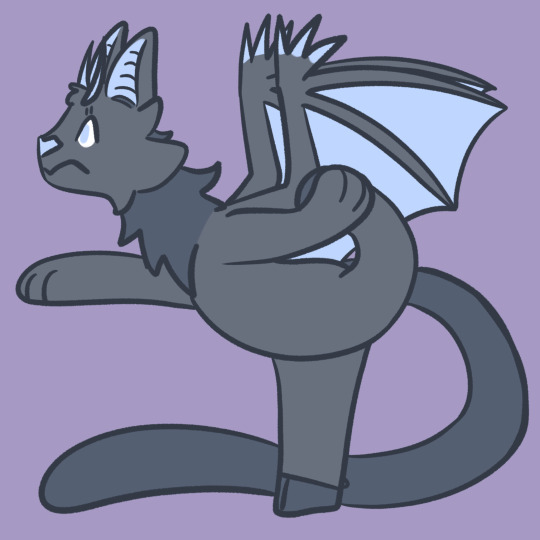

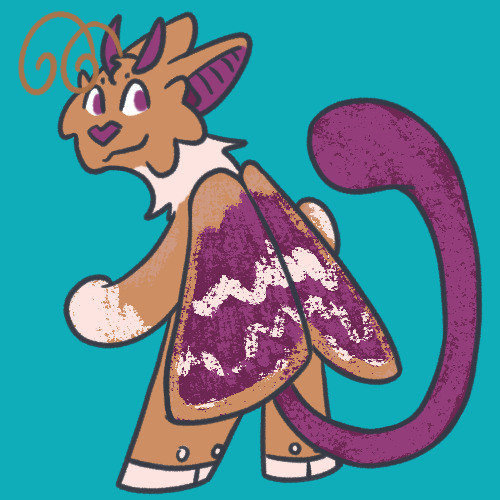
#drawing#digital art#art#oc art#oc#ren#tutelary#tute#moth#butterfly#yea one is corazon inspired#it’s a pink spotted cattleheart#the other is raspberry pyrausta
10 notes
·
View notes
Text



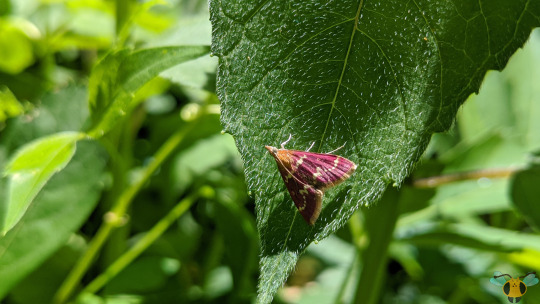
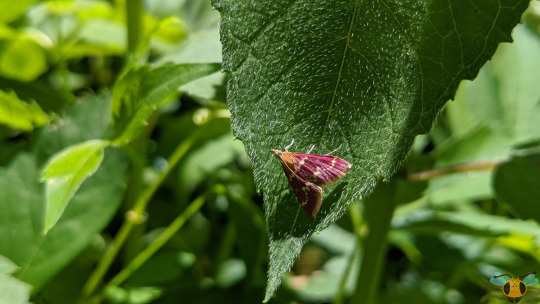


Raspberry Pyrausta Moth - Pyrausta signatalis
It may be a beautiful sight featuring pink-scaled wings and it may fly around during the day, but today's specimen isn't a Butterfly. Rather, it's a familiar specie of snouted Moth (of the large family Crambidae). As mentioned in the previous post featuring this find (nearly 5 years ago, wow), this Moth's "snout" is all of its mouthparts close together. Fortunately for this specie, its mouthparts aren't vestigial, so this Moth can freely sip nectar from any alluring flower that it comes across while flying. Thusly, we insect lovers can enjoy its presence when we see it flitting among the wilderness or darting about a garden as a pink flash. Although it should be excepted to find this Moth hiding away or near flowers, I think this individual may have been searching for something else (more on that below). As a reminder, while its forewings are bright pink with white markings, its hindwings (which are kept tightly under wraps) feature brown-colored scales. You may be able to see them as the insect lands upon a surface. If quick enough with the specimens that you find, see if you can spot a faint "dash" marking which runs across the hindwing. If you see white, then you may be looking at either the Moth's elegant legs or the ventral side of its body.
I'm quite suspicious as today's pink Lepidopteran was found in nearly the same location as the previous one: on leaves that were in close proximity to a certain flower: a series of what I'm guessing are red beebalm plants. In a past post, that flower patch has also been frequented by a roaming Tiger Bee Fly searching for nectar...or possibly a perching area to briefly rest. While nectar is a worthy prize, these Moths sometimes rely on beebalms or similar plants as suitable locations for their Caterpillars to obtain food. From what I've been able to read from both insect guides and gardeners, Raspberry Pyrausta Caterpillars may frequent the leaves of beebalm plants and the innards of the fully developed flowers. I haven't seen one of the pink, grub-like wigglers yet so I cannot ascertain how big a bane they may be to a beebalm bloom and the plant's overall health, but I'll keep an eye out for future posts. Of course, it could just be chance that this Moth was found in a similar location and was just passing through. Admittedly I can only guess on their intentions here; beebalm may be enticing, but there were many other flowers nearby. As a final note, this is one Moth specie where males and females seemingly can't be distinguished by a glance at their thread-like antennae. This observation appears to be very prevalent - if not the norm - among the many species of Crambid Moth.
Pictures were taken on June 9, 2020 with a Google Pixel 4.
#jonny’s insect catalogue#ontario insect#moth#raspberry pyrausta moth#pyrausta signatalis#lepidoptera#insect#toronto#june2020#2020#nature#entomology#invertebrates#arthropods#photography#animals
15 notes
·
View notes
Text
Wild Bergamot/Bee Balm Folklore and Magical Properties
Monarda species, also known as bee balm, Oswego tea, and wild bergamot, is one of my favorite native flowers. The blooms themselves are striking, the leaves are fragrant, they spread very easily, and they thrive where other plants falter. They’re fantastic additions to permaculture guilds, since they’re good at attracting oft-neglected native US pollinators like the raspberry pyrausta moth. It’s…
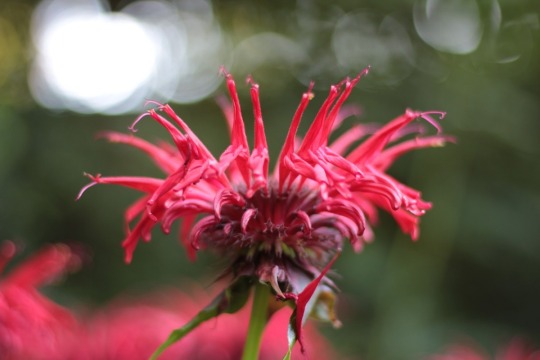
View On WordPress
0 notes
Photo
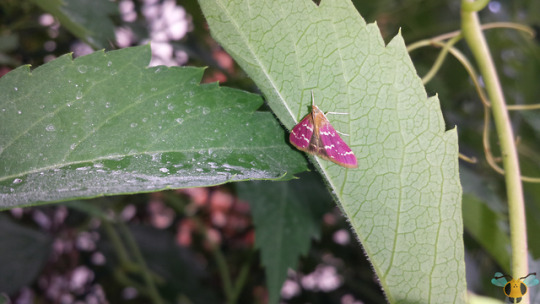
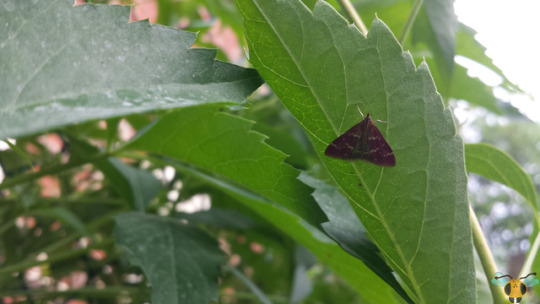
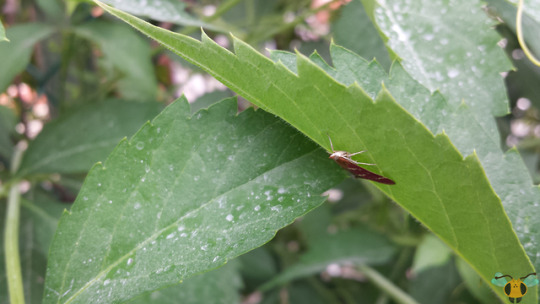
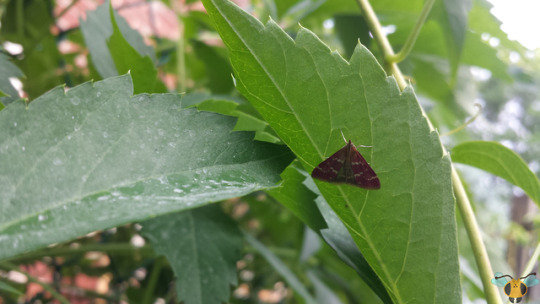
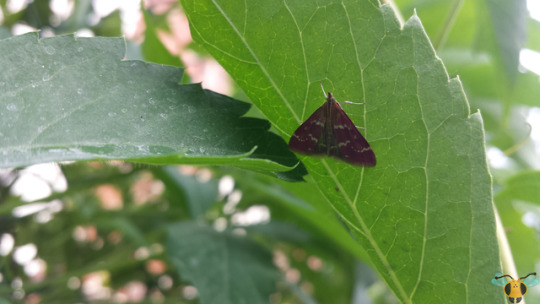
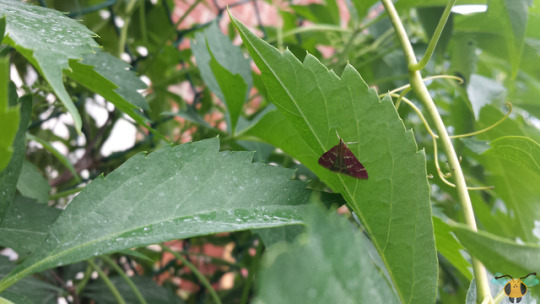
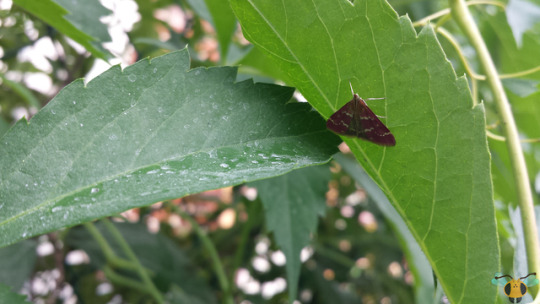
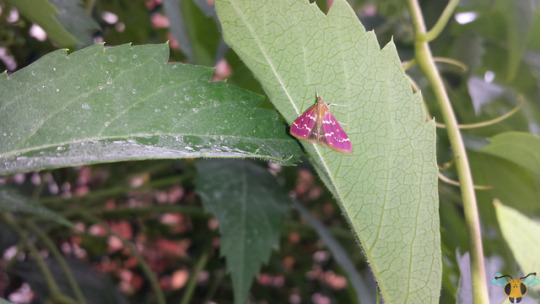
Raspberry Pyrausta Moth - Pyrausta signatalis
What’s this? A Moth flying around in the daylight? Your eyes do not deceive you! If you see a Moth in flight, keep an eye on where it travels to as some tend to just disappear beneath hanging leaves or dark corners at a moments notice. Of course, when they disappear, they aren’t really gone. Rather they’ve just picked a hiding place to get away from something or to cool off from the sun. With either option chosen, darkness provides the best hiding places, even with such vivid coloration on this specie’s wings. This sort of concealment behavior is also seen in the Box-Tree Moth, but that Moth possesses a wider wingspan, causing it to stick out more, unlike this Moth whose wings are relatively tucked in at rest. As well, compared to the Box-Tree Moth, this pink-winged Moth is native to the North Americas and its Caterpillars are their feeding do not seem to be of great concern as far as pest insects go.
This Moth is easily identifiable by pink scaled forewings which are accentuated with distinctly shaped white lines. If you’re looking for this Moth in particular, take extra note on these characteristics as many Moths in the Pyrausta genus exhibit similar (but not exact) colorations and patterning. A good example of this is the Coffee-Loving Pyrausta Moth (Pyrausta tyralis) which features dark coloration and bold yellow lines along its forewings. Other similar examples may display brown or yellow wings altogether! As for this specie, while the forewings of this Moth are eye-catching, almost floral, its hindwings are colored brown. Furthermore, if you zoom in on this Moth’s head, you can see a characteristic snout, liked a pointy nose, which constitutes the mouthparts of this insect. While I’m not sure what the adults eat (if they even eat at all), their larvae prefer eating mint plants. Presumably leaves are their sustenance of choice, but accounts of Pyrausta feeding vary across specie; some Caterpillars prefer the plant’s leaves, while others will bore into the stems and fruits. Don’t let the common name fool you, however; raspberries are not on this insect’s menu.
Pictures were taken on June 24, 2019 with a Samsung Galaxy S4.
#jonny’s insect catalogue#ontario insect#moth#raspberry pyrausta moth#pyrausta signatalis#lepidoptera#insect#toronto#june2019#2019#entomology#nature#invertebrates#arthropods#photography#animals
1 note
·
View note